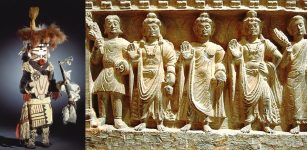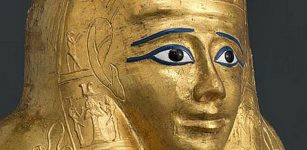Surprising Inscription Discovered On Birka Ring – Ancient Viking Artifact
AncientPages.com - At first sight, the Birka Ring, an ancient Viking artifact resembles just an old ring.
However a closer examination of the ring revealed a surprising discovery, an unexpected inscription of foreign origin.
Image credit: Birka Vikingastaden
"More than a century after its discovery in a ninth century woman’s grave, an engraved ring has revealed evidence of close contacts between Viking Age Scandinavians and the Islamic world.
Excavators of a Viking trading center in Sweden called Birka recovered the silver ring in the late 1800s. Until now, it was thought that it featured a violet amethyst engraved with Arabic-looking characters. But closer inspection with a scanning electron microscope revealed that the presumed amethyst is colored glass (an exotic material at the time), say biophysicist Sebastian Wärmländer of Stockholm University and his colleagues.
A new study suggests that a ninth century ring from a Viking site in Sweden came directly from the Islamic civilization. The ring includes an inset of colored glass engraved with ancient Arabic script.
An inscription on the glass inset reads either “for Allah” or “to Allah” in an ancient Arabic script, the researchers report February 23 in Scanning.
Scandinavians traded for fancy glass objects from Egypt and Mesopotamia as early as 3,400 years ago (SN: 1/24/15, p. 8). Thus, seagoing Scandinavians could have acquired glass items from Islamic traders in the same part of the world more than 2,000 years later rather than waiting for such desirable pieces to move north through trade networks.
See also:
Ancient texts mention encounters around 1,000 years ago between Scandinavians and members of the Islamic civilization, which stretched from West Asia to Mediterranean lands. Archaeological evidence supporting those accounts, though, is rare.
The inner surface of the Birka ring’s silver body shows virtually no signs of wear. Filing marks made in the final stage of its production are still visible. That suggests that the ring made by an Arabic silversmith had few or no owners before it reached the Viking woman, the researchers say.
AncientPages.com
Expand for references




















